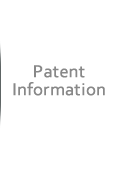NRG SystemsTM was incorporated in Delaware in 1989, and engaged in corporate consulting during the two ensuing decades, serving numerous NYSE listed companies and foreign entities. In 2013 NRGTM’s President, Helmuth Heneman was approached by Sandia National Laboratories for commercial evaluation of a novel technical discovery. On investigation, NRGTM found the technology so remarkable that it decided to invest directly and join Sandia in partnership for development and commercialization.
Simply stated, Sandia had discovered why hydrocarbons adhere to rock and how they might best be liberated. Potential implications of the discovery include:
| |
• Enhanced valuation of existing wells and reservoirs |
|
| |
• Higher initial well production with extended well life |
|
| |
• Refinement of well M&A valuations |
|
| |
• Increased accuracy in loan collateral valuation |
|
| |
• More profitable well operation and reservoir development strategies |
|
NRGTM executed exclusive licenses for Sandia’s technology and joined in a program of research, testing, and patenting. Over the ensuing eighteen months numerous unsuspected mechanisms were discovered. The developed technology offers an entirely new approach for well stimulation, rather than an improvement of traditional methods. As such it has potential for application far beyond the Oil & Gas industry. Theoretical and bench scale tests suggested that production improvements of up to 40% may be achievable at nominal cost. A patent estate embracing these and a host of innovative methods, was carefully assembled and filed. These patents have begun to issue. During 2015, the partnership will undertake full-scale testing of its well NRGizingTM technology.
Well NRGizingTM can be employed independently or in conjunction with most conventional well stimulation techniques. For the most part other techniques rely on physical, thermal, or chemical mechanisms for modification of oil molecules to stimulate or enhance their flow. NRGizingTM focuses on separating the oil molecules from rock to which they are bound. This is particularly effective in tight formations where surface contact ratio is greater.
Of equal importance is NRGTM’s predictive and neural control model that provides both the present value of alternative NRGizingTM treatments and guides the operator to a desired outcome. |





